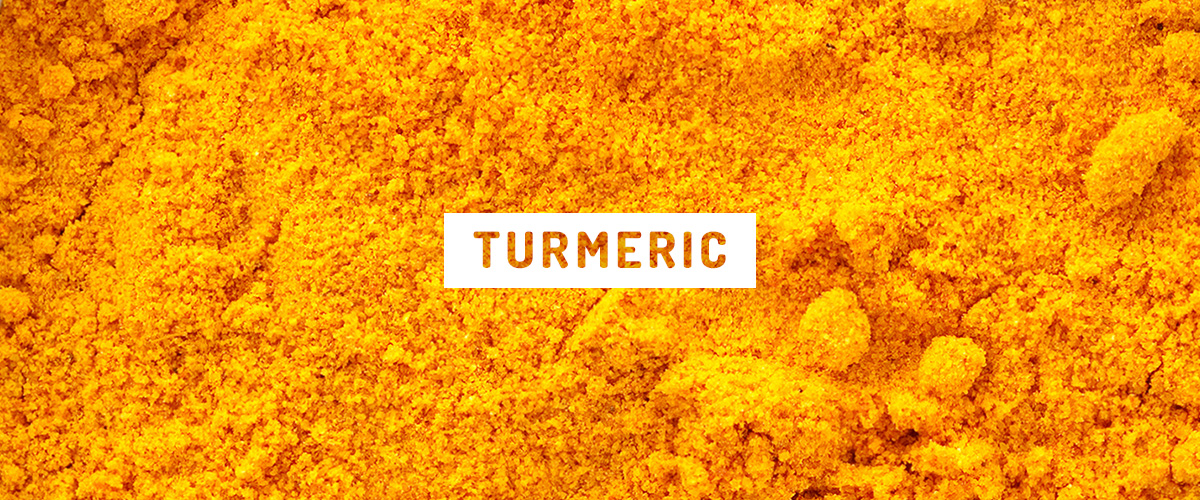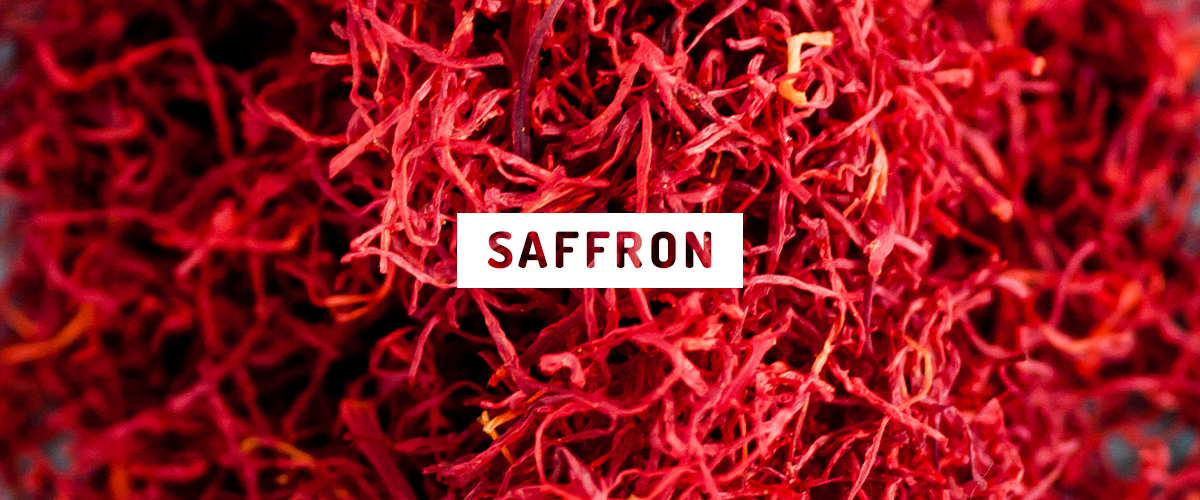Turmeric vs. Saffron: What’s the Difference, What Does It Taste Like & More
Last Update: May 22, 2025
Turmeric vs. Saffron Infographic click here
Variety is the spice of life—but when it comes to cooking, spices add life to many dishes. The right herbs and seasonings can elevate a recipe to something truly special, and could also have some added benefits for the person enjoying the meal.
But, while some options like rosemary and basil are so commonly used that home chefs could cook with them in their sleep, others are more exotic and not always fully understood. Two perfect examples are turmeric and saffron.
These two herbs have been used traditionally in Indian and Middle Eastern recipes as well as for medicinal purposes in some cultures over a long span of time [1][2]. And they are quite similar. The name turmeric actually derives from a Persian word meaning saffron; the spice is also sometimes referred to as “golden saffron.” [3]
So, What is the Difference Between Turmeric and Saffron?
While they might be similar in some ways (such as their vibrant colors and bold flavors), they come from different plants. Turmeric is a rhizome, or root, while saffron comes from a flower. Accordingly, saffron has a lighter and more floral flavor than turmeric, which is much more bitter and earthy [4].
Interestingly, saffron is considered a viable substitute for turmeric, and turmeric is considered a viable substitute for saffron.
Taking a closer look at the differences between these two spices and their varied uses can help make it easier to know which one to grab for any occasion. Suffice it to say that both deserve a place in your spice rack.
More about turmeric
Turmeric is a perennial plant that comes from the ginger family, and is native to Indonesia and Southern India. In fact, India is the world’s number-one consumer and exporter of turmeric; the country harvests more than 100,000 tons per season [5].
It’s a root plant, so it grows underground and is generally cared for by hand with regular irrigation and sustainable farming methods. After cultivating, it’s then dried and crushed into the powder form that’s commonly available in grocery stores around the world.
In addition to cooking purposes, turmeric has also been used for more than 4,000 years in natural medicine, often linked in studies to capabilities for fighting inflammation and easing digestive problems [6].
The appearance and flavor of turmeric
Because it comes from the same family of plants, turmeric shares many of the same characteristics of the ginger root. It has a standout deep golden color and a peppery and bitter taste that’s characteristic of its most common use in curry dishes. Due to its color, turmeric can also serve as an excellent coloring agent.
Types of turmeric
There are about 30 different varieties of turmeric that are commonly cultivated. Of these, the variety known as “erode” is the most common due to its higher quality and widespread distribution. Krishna is another variety, and one that provides the highest yield of the herb per plant. Other types include:
- China scented
- Red streaked
- Alleppey
- Thodupuzha
- Andhra Pradesh
- Salem turmeric
In most instances, identifying the specific type of turmeric you purchase is difficult or even impossible; most varieties have the same taste and consistency.
So what does turmeric taste like? Most would agree that turmeric has an eathy and even pleasantly bitter taste.
Does turmeric taste good? Well that depends on your palate, but most people agree that it has a deep, rich taste that really adds an incredible flavor profile to recipes. However, choosing a natural, organic brand is always a good bet to ensure purity and quality.
Other benefits of turmeric
While cooking is the primary use for turmeric, for centuries it has been believed by many cultures to provide health properties. It has an active ingredient known as curcumin; this chemical contains antioxidants and known anti-inflammatory agents [7].
Thanks to these features, turmeric is one of the most heavily studied herbs today—more than 6,000 different scientific studies have been done, most of them uncovering new and exciting evidence for its use as a natural remedy. Here are some studies and their findings. Of course, it’s always a good idea to consult your doctor for medical advice about these issues, too.
- Turmeric, and curcumin, have been studied to assess their impact on the development of Alzheimer’s disease. Studies like this one have found that the use of turmeric introduces numerous naturally-occurring compounds that can block the creation of beta-amyloid, a substance that can form plaque in the brain and obstruct cerebral function [8].
- Another study looks at turmeric’s relationship to the development of cancer. Specifically researchers have honed in on the antioxidant mechanisms found in curcumin that can block free radicals and help reduce the development and proliferation of cancer cells [9].
- One of the biggest area of concentration is on turmeric’s connection to inflammation. Some studies have found that by using turmeric, symptoms can be lessened and inflammation-related conditions, including arthritis, can be eased.
- Digestive issues seem to be another target area for turmeric. Scientists have seen a reduction in symptoms related to indigestion, ulcerative colitis, stomach ulcers, and more. Since curcumin can stimulate the gallbladder’s production of bile, many theorize this is partially why it helps [10].
Best ways to cook with turmeric
Turmeric can be used in many recipes. As we mentioned, turmeric tastes earthy and pleasantly bitter, which adds so much depth to any dish. Here are some tried and true cooking applications:
- Seasoning grilled meats like lamb
- Making spicy chicken curry or vegetable yellow curry
- Whipping up homemade dressings
- Roasting vegetables
- Adding to a variety of smoothies
- Making a variety of tea drinks, whether using tea bags with turmeric in them or mixing up the powder to create warm golden milk
More about saffron
Okay, after all this talk of turmeric, the question becomes what is saffron and how does it compare?
Saffron is a bulbous perennial plant that bears up to four flowers, and these flowers contain three crimson-colored stigmas or threads. The dried stigmas are the portion of the plant that’s used to produce the ground spice, which is used primarily in seafood and rice dishes.
More important than the question “what is saffron”, the question most ask is why is saffron so expensive and legendary?
Producing just one pound of saffron can take up to 75,000 blossoms, along with concentrated time and labor to get the amount needed, which means it can be an expensive seasoning. Luckily, it takes very few threads of saffron to flavor and color food. And if you don’t have any on hand, turmeric is a viable substitute for saffron. Both spices are members of the ginger family.
While saffron was first cultivated near Greece, it’s now common throughout the world, with Iran being the leading source of the herb today.
The appearance and flavor of saffron
Unlike turmeric, saffron has a very distinct crimson red color, and its flavor is comparable to florals and honey.
In fact, most people agree that saffron has a floral taste, and a flavor profile that is earthy, which is similar to turmeric.
The floral taste of saffron makes it a favorite among cooks. If too much is used in cooking it can actually end up giving the food a medicinal or bitter taste. Turmeric’s earthy taste can overpower a dish if not used in proportion. It’s used particularly in Indian and Turkish cooking, including curries, though it’s also commonly used to season everything from sweet rice puddings to drinks and ice cream.
Types of saffron
As with turmeric, there are several different subspecies of saffron. These vary depending on the climate they’re grown in, and some types are identified by the location they’re grown in. Some examples include:
- Sardinia saffron (from Italy)
- Zafferano dell’Aquila (also grown in Italy)
- Sargol saffron (from Iran)
- Kashmiri saffron (from India)
As with turmeric, identifying the exact species that’s being purchased will likely be difficult. It’s best to devote time to choosing a brand that is natural and organic instead.
Other benefits of saffron
Like turmeric, saffron has also been researched quite a bit, focusing on the active ingredients known as safranal and crocin. Each has antioxidants and some level of vitamins [11]. Here’s some recent studies and their findings:
- Crocin has been found to have a link to cancer development. Some research shows that this substance could potentially lower the risk of developing certain types of cancers.
- Detoxification may be another benefit. Another study found that the use of saffron helped detoxify the body and removed traces of heavy metals (aluminum in particular). Detoxing removes chemicals and other toxins that have built up in the body.
- There is also seems to be a relationship between saffron and respiratory function. Some evidence suggests that using saffron could help loosen phlegm and clear airways, making it easier for those with asthma, pertussis, and persistent cough to breathe easier.
Again, though, it’s always best to check with your doctor before trying any at-home remedies.
Best ways to cook with saffron
The great thing about saffron is that it can be used in a multitude of different ways. While it can be used to season savory dishes, it’s also very common in sweet foods and beverages. Some of the best ways to use saffron include:
- Soups and stews
- Seafood dishes
- Risotto or rice
- Steeping loose leaves for a unique tea
No matter how you use it, remember that a little saffron goes a long way.
A final thought on turmeric and saffron
Choosing between turmeric and saffron may come down to the cooking applications and affordability factors. Turmeric is often seen as the most affordable option between the two, but also can be more limited in the kitchen whereas saffron can be a bit more versatile given its sweet and savory notes.
When it comes to possible health benefits, turmeric has been studied in far greater capacity but saffron also has antioxidants that can be impactful. It’s ideal to have both available in your kitchen for anytime inspiration hits.


